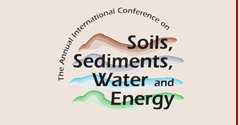Abstract
At the present time acid mine drainage (AMD) belongs among the worst environmental problems associated with mining activity. At the beginning and in the middle of Twentieth Century the attenuation of mining activity in the Slovak Republic gave rise to extensive closing of deposits using wet conservation i.e. their flooding. The negative results of AMD activity can be observed mainly at localities after the mining of sulphide ores and raw materials containing sulphides. At the deposits Roznava, Pezinok and Rudnany the surrounding carbonate system is partly buffering the AMD evolution. During the last decade at the locality Sobov there was applied various remediation methods aimed at reducing the environmental impact of AMD but without marked success. The deposit of Smolnik represents from the point of occurrence and generation of AMD the classical example. All the area of deposit is markedly affected by AMD activity. The mine waters have pH 3.8, high concentrations of sulphates, Fe, Mn, Cu, Zn, Al, and are discharging straight in the stream Smolnik. In order to propose the effective and economically available method to prevent the negative influence of AMD at this locality it is necessary to understand the reasons of changes in evolution of mine water composition and real estimation of their long-time evolution. The article presents the results of monitoring of AMD quality at the locality of Smolnik in years 1986 – 2005. In order to better understand processes running at the locality there was also realized the geochemical modeling of AMD quality evolution during its gradual ascent of surface.
Recommended Citation
Slesarova, Andrea; Kusnierova, Maria; Luptakova, Alena; and Zeman, Josef
(2010)
"An Overview Of Occurrence And Evolution Of Acid Mine Drainage In The Slovak Republic,"
Proceedings of the Annual International Conference on Soils, Sediments, Water and Energy: Vol. 12, Article 3.
Available at:
https://scholarworks.umass.edu/soilsproceedings/vol12/iss1/3
